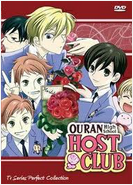In one of my favorite passages from the graphic memoir
A Chinese Life, young artist Xiao Li and his wife Fengfeng go to see old Bureau Chief Wang and his wife in their cramped room in the night-shift dormitories of the
Yunnan Ribao newspaper. It's a friendly visit, but Xiao Li and Fengfeng are obviously checking out the room, since they'll likely be assigned to live there after Chief Wang gets a bigger place.
The young couple tries to be optimistic about the dorm, but gangs of kids are running wild, smoke is pouring out of one of the rooms, the halls are cluttered with junk, laundry is draped across indoor clotheslines, an old man is bathing in the open near a woman who's chopping vegetables, another woman is screaming and throwing dishes, and someone else is frantically searching for a lost chicken.
In
A Chinese Life, illustrator Li Kunwu and French writer/diplomat Philippe Otie present the history of modern China to Western audiences from Li's intimate perspective as a "Chinese everyman." While they offer a sweeping view of China, the view is sharpest when focused on ordinary, everyday life.
A Chinese Life more or less covers major Chinese events from about 1950 to 2010, including Mao Zedong's Great Leap Forward, the famines of 1958-1961, the Cultural Revolution, Deng Xiaoping's economic reforms, the 1989 Tiananmen Square protests, urbanization, and increasing prosperity.
But even at 700 pages, some historical details in
A Chinese Life are sketchy. Li admits, for example, that he doesn't know anyone who was directly affected by 6/4, the Chinese name for the Tiananmen Square protests which were violently suppressed on June 4, 1989. During the crackdown, the Chinese military killed hundreds if not thousands of students and civilians.
Li skims over 6/4 by saying he believes many Chinese people value stability and order over human rights because of the earlier decades of famine and political upheaval which killed tens of millions of Chinese. Li's portrayal of the "indescribable torments" of those earlier decades is powerful. One of his uncles literally ate dirt while trying survive the Great Famine, and his father was publicly denounced during the frenzy of the Cultural Revolution and was forced to perform manual labor in re-education camps for ten years.
It is remarkable that a member of the Chinese Communist Party would be so forthcoming, and that this is happening in a graphic novel. To some Westerners though, Li's depictions of such events may seem more like an apparatchik's apologia than a critical attempt to understand what happened.
More so than the grand historical overview, intimate scenes like Xiao Li and Fengfeng's visit to the dormitory are what make
A Chinese Life worth reading. With a subtle mix of humor and sadness, Li examines his strained relationship with his larger-than-life father, describes an awkward moment when he asks his girlfriend if she would pose nude for his drawings, and recalls helping his elderly mother make dumplings.
Besides being a great storyteller, Li's artwork is brilliant.
A Chinese Life is illustrated almost entirely in black and white. The contrast is stark and the composition is striking. Fascinating, energetic lines reveal austere landscapes, earthy villages, and chaotic cities. Characters' hands and faces are especially expressive. Some of the most compelling panels lack dialogue; they are simple portraits of children at school, soldiers in barracks, villagers in markets, and workers in factories.
 |
Page 275 from A Chinese Life ©
Kana (DARGAUD-LOMBARD s.a.) 2011, by Li Kunwu, P.Otie. Published in English by
SelfMadeHero. Used with permission.
|
Li describes his own style as "rough," but "bold and playful" is a better description. The illustrations appear to be done in brush and ink, and they look like extensions of the flowing Chinese calligraphy which Li includes on most pages.
A Chinese Life was originally published in France in several volumes. It was translated from the French by Edward Gauvin and published by SelfMadeHero in 2012. Some transitions between passages and stories in the English edition are abrupt, but the work as a whole is easy to follow. The book is hefty at about 700 pages, but it doesn't seem long when read. Instead, it ends far too quickly.
Michael May

























